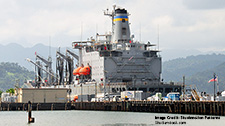Changing Southeast Asia: The Role of China, the United States, Japan and ASEAN
Chen Jianrong
Southeast Asia’s international perspective has been changing sharply in the twenty-first century. A multipolar structure has emerged, in which China, the U.S. and Japan work together with ASEAN to maintain peace, stability and prosperity in the region. Success in this endeavor depends largely on ASEAN’s influence and role. ASEAN understands China’s influence in the Southeast Asia is rising, while the U.S. is a “moderate superpower”; therefore, it is necessary to expand the impact and presence of the U.S. and Japan in order to counterbalance China. Despite China’s rise and the changing political landscape in Southeast Asia, the U.S. will continue to play an important role in the region.
Related Publications
-
ISDP Annual Report 2023
ISDP’s Annual Report for the year 2023. We look back on 2023, a year in which tensions and conflicts captured the strategic space in ISDP’s focus areas, making headlines around […]
-
Taiwan and the Diplomatic Squeeze
In mid-March 2023, the self-governing island of Taiwan lost another one of its already few diplomatic allies. Announcing the severing of diplomatic ties between Taiwan and Honduras on Twitter on March 15, […]
-
EU-Thailand FTA Negotiations: IUU Fishing and Human Rights Remain Obstacles
Thailand’s fishing industry, which at its height saw as many as 200,000 migrant workers from neighboring Laos, Myanmar, and Cambodia caught in a brutal system of abuse, withered global criticism […]
-
Needed, a Framework to Protect Undersea Cables
In the data-driven world we live in, submarine cables are the arteries that connect nation-states and their people in literally every human activity, including trade, commerce, entertainment, and social interactions. […]
-
India-Japan-Philippines: A Strategic Maritime Trilateral or More?
Regional states like India, Japan, and the Philippines have been seeking cooperative solutions with other middle powers that can both counter the Chinese influence and fulfill other economic as well […]




